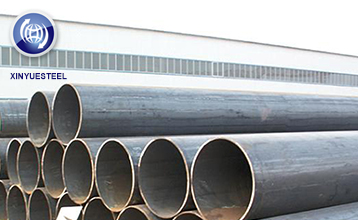New progress made in the refractory industry in the 21st century
Nov. 03, 2021
After entering the 21st century, on the one hand, the refractory industry continues to deepen and vigorously promote the scientific and technological achievements obtained during the "Eighth Five-Year Plan" and "Ninth Five-Year Plan"; Supported by other scientific and technological projects, we have continued to develop and apply a number of new technologies and products with independent property rights; at the same time, the Refractory Branch of the Chinese Society of Metals and the National Refractory Standardization Technical Committee have played an important role in promoting industry academic exchanges and industry standardization work. . Refractory professional higher education and corporate R&D centers continue to develop, and the scientific and technological innovation capabilities continue to increase. The level of large-scale production equipment, automation, and intelligence has been continuously improved, and the quality of industry operation and the effect of energy conservation and environmental protection have been continuously improved. The overall level of the refractory industry has been significantly improved, which has continuously met the high-quality development of high-temperature industries such as steel.
——The technical level of the refractory industry and the scientific and technological innovation capabilities continue to improve.

SiAlON (or Si3N4) combined with SiC has been applied in large and extra large blast furnaces, adapting to the development of large-scale blast furnace "thin-wall structure" and high-efficiency cooling stave technology. After 2010, ironmaking blast furnaces began to promote the application of high-blast temperature top-combustion hot blast stoves, which is closely related to the technological progress of refractories. At present, silica bricks have been widely used in the middle and high temperature areas of top-combustion hot blast stoves to replace traditional low creep high alumina bricks, and high thermal conductivity silica bricks have been developed and applied. The developed basic magnesia-aluminum non-burned bricks for RH and other refining furnaces, high-quality slide plates and mechanisms for slag-stopping technology of converter slides, low-carbon magnesia-carbon and aluminum-magnesium-carbon bricks, cement kiln firing with slag skin (kiln Skin) Magnesium-iron fired bricks, chrome corundum bricks that can form slag skin for the lining of copper smelting converters, low chromium corundum bricks for coal gasifiers, and new nano-combined thermal insulation materials have been widely promoted and applied. In order to meet the needs of the development of clean steel smelting production technology, the application range and use ratio of basic magnesium materials with no carbon, low carbon (or low carbon and no Al2O3) have been increasing. The proportion of products with low energy consumption that are amorphous, non-burning or low-temperature processing has reached more than 70%. The depth and scope of application research on secondary solid waste resources including post-use refractories have been continuously improved and expanded. Nearly 100% of post-use refractories in the iron and steel industry have been recycled. The research put forward and continuously improved the gradient theory, self-reactive sintering, in-situ reaction, self-protection and "slag skin theory". It has promoted the technological progress of the refractory industry and the development of low carbon (CO2), low energy consumption and comprehensive utilization of resources.
The refractory professional higher education and enterprise research and development bases (centers) continue to grow and develop. Wuhan University of Science and Technology, Xi’an University of Architecture and Technology, Liaoning University of Science and Technology, Zhengzhou University and Beijing University of Science and Technology have three levels of higher education in refractory materials, including bachelor, master and doctorate. Many other universities such as Luoyang Institute of Technology and Henan University of Science and Technology The School of Materials Engineering, University of Jinan, Northeastern University, Tianjin University, etc. also continue to send undergraduates and graduate students to the refractory industry; including the National Engineering Research Center for Refractories of the Luoyang Institute of Refractories and the State Key Laboratory of Advanced Refractories. There are more than 10 national key laboratories and engineering research (technology) centers covering refractory materials, and nearly 80 provincial-level enterprise centers (technology centers, engineering centers, engineering technology centers, etc.); there are There are nearly 10 enterprise academician workstations and more than 10 enterprise postdoctoral research and development bases. Higher education, personnel training, and R&D platforms in the refractory industry have all been greatly developed, and the capacity for scientific and technological innovation has continued to improve.



